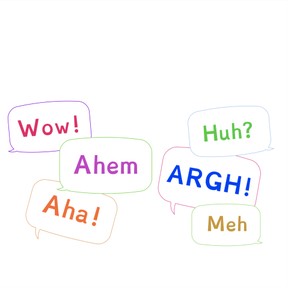
Interjections
I can explain what interjections are and their function in particular sentences.



8,000 schools use Gynzy
92,000 teachers use Gynzy
1,600,000 students use Gynzy
General
In this lesson, students will learn about interjections and how to recognize them. They will practice identifying interjections in sentences and seeing how they convey different emotions. They will also think of interjections themselves to add to sentences.
Standards
CCSS.ELA-Literacy.L.5.1a
Learning objective
Students will be able to explain what interjections are and their function in particular sentences.
Introduction
Students will share some words that can be used to express the emotions: excitement, surprise, and disbelief. Introduce interjections as words that express emotions, such as excitement, disgust, or disagreement. Students will read examples, including "Yay" and "Ugh."
Instruction
Explain that interjection can show strong emotion, usually followed by an exclamation point, and less emotion, usually followed by a comma. They will read examples of both strong and less emotion, and determine the feelings being expressed by the interjections. Students will also read sentences with interjections and drag the correct punctuation marks to match the sentences. They will then drag the appropriate interjection, such as "ew" or "oops," to match the emotion. Students will discuss possible interjections to add to sentences to express the emotions, surprise, pain, and hesitation.
Quiz
Students will respond to 3 true/false and 7 multiple-choice questions.
Closing
Students will recall what they learned:
- Why is it important to understand interjections as readers?
- How can we use interjections as writers?
They will finish the lesson by participating in a spin the wheel activity. Students will spin the wheel to determine which interjection to include in a sentence.
The online teaching platform for interactive whiteboards and displays in schools
Save time building lessons
Manage the classroom more efficiently
Increase student engagement
Discover more!
About Gynzy
Gynzy is an online teaching platform for interactive whiteboards and displays in schools.
With a focus on elementary education, Gynzy’s Whiteboard, digital tools, and activities make it easy for teachers to save time building lessons, increase student engagement, and make classroom management more efficient.



